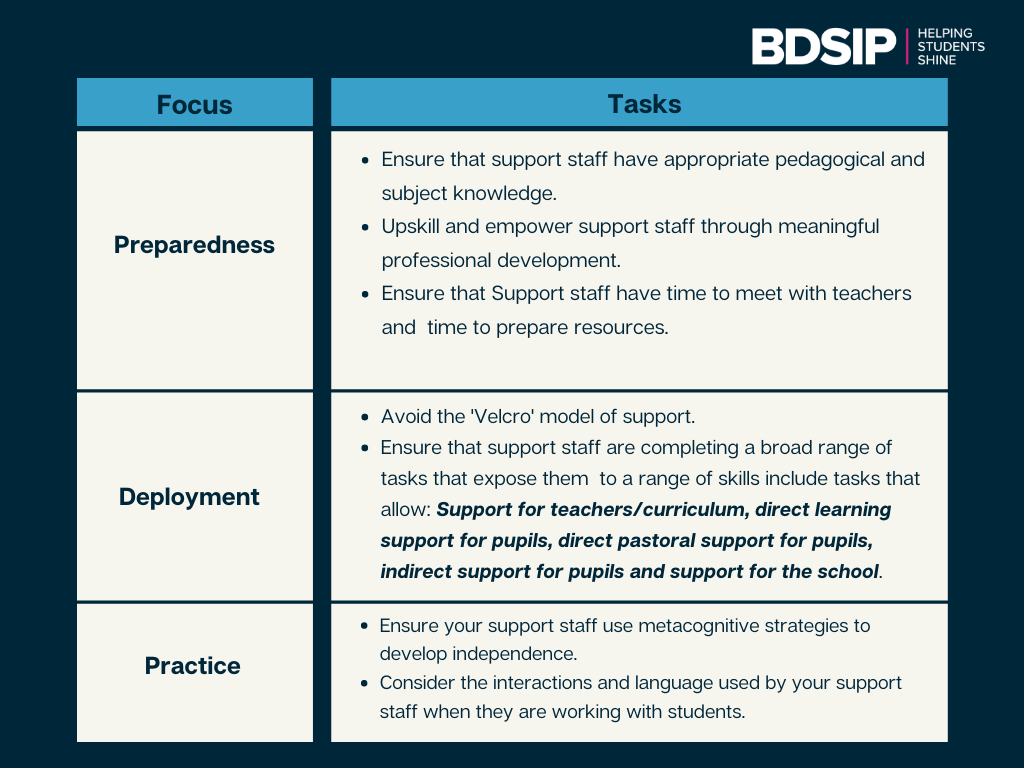The number of teaching assistants in schools has increased by 20% over the last ten years, with an additional 54, 331 teaching assistants working within schools since 2012 (DfE, 2022). However, this may not be surprising to educators, as the number of students with special educational needs has increased nationally. However, it is important to consider whether teaching assistants are being deployed effectively and if their impact is being maximized.
Supporting students with a special educational need can be overwhelming at times. It may be that you have a class where all the students have an additional need, or it may just be one student. At times this may require an additional adult in the room, but how do you maximize the impact of that adult? How do you ensure that the support in place is effective and equips students with the tools they require to be independent learners? The deployment of support staff is one many schools struggle to optimize, both within the classroom and around the school. It may be that your school does not have enough support staff or that their impact is not being maximized. Whatever the reason, ensuring that they are effective is a priority for all schools.
So how effectively are school’s utilising teaching assistants and are they maximizing their impact?
The Deployment and Impact of Support Staff report (DISS) was a longitudinal study conducted between 2003-2009 that aimed to assess the impact and effectiveness of teaching assistants (TAs). The findings of this study surprised many as they indicated that students who were receiving the most TA support were making less progress than students who received no TA support or little TA support (Blatchford et al., 2009). These findings acted as a pivotal moment in how TAs should be deployed to maximise impact. The outcomes of this study as well as Deployment and Impact of Support Staff project (DISS) and the Maximising the Impact of Teaching Assistants programme (MITA) have informed the approaches schools should take to improve pupil outcomes and the effectiveness of TAs. Blatchford’s et al’s pivotal research outlined key variables that are crucial to maximising the impact of teaching assistants.
Blatchford et al. (2009) expressed that despite the positive impact TAs have on teachers’ workloads, their support did not have a profound impact on SEN students’ progress and at times even had a negative impact on their academic progress. They therefore introduced the WPR model to summarise results from the DISS project. The model outlines the following five facets: Practice, Deployment, Preparedness, Conditions of employment and Support staff characteristics.
Out of the five facets, there are three that schools should particularly focus on: Preparedness, Deployment and Practice. Ensuring that these areas are developed within your school will support you in maximizing the impact of you teaching assistants, but how can that be done?
BDSIP offers a range of CPD for support staff, you can sign up or register interest for our CPD offer here.
Hannah Hamid
Senior Inclusion Advisor
